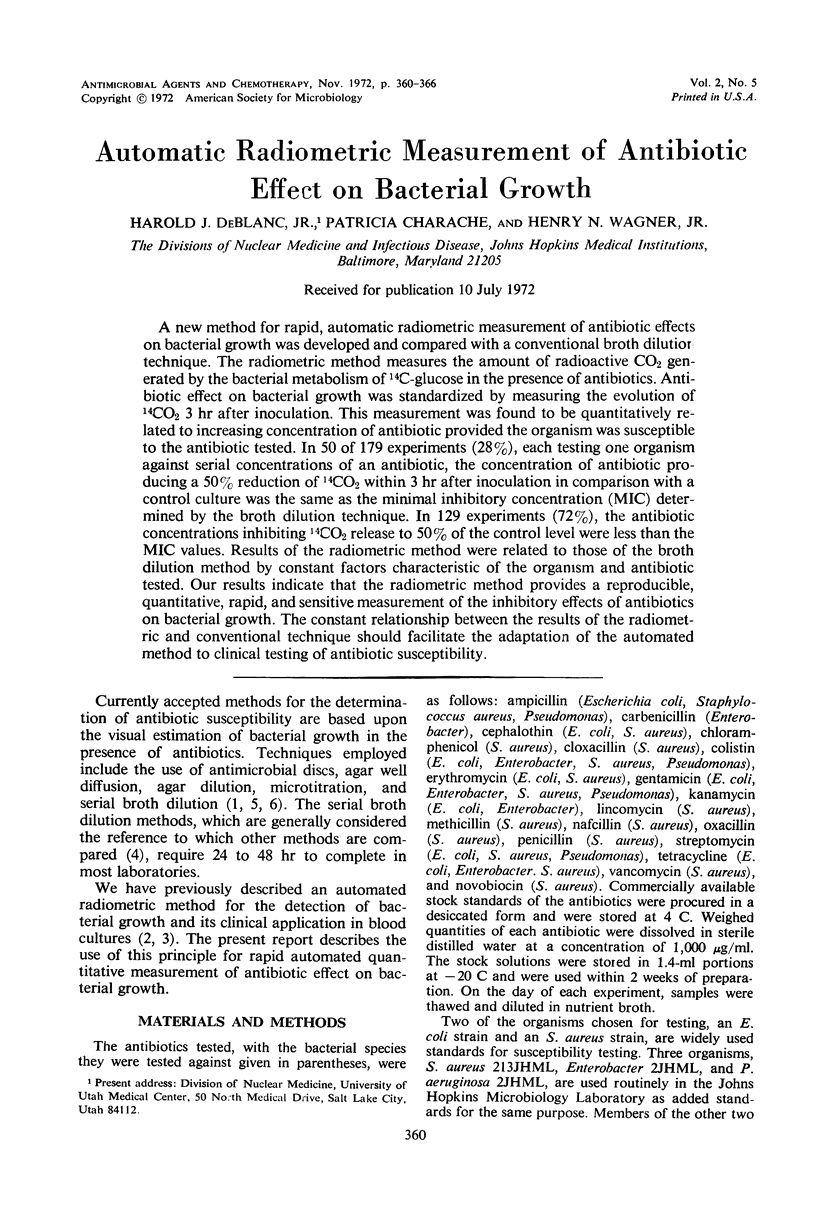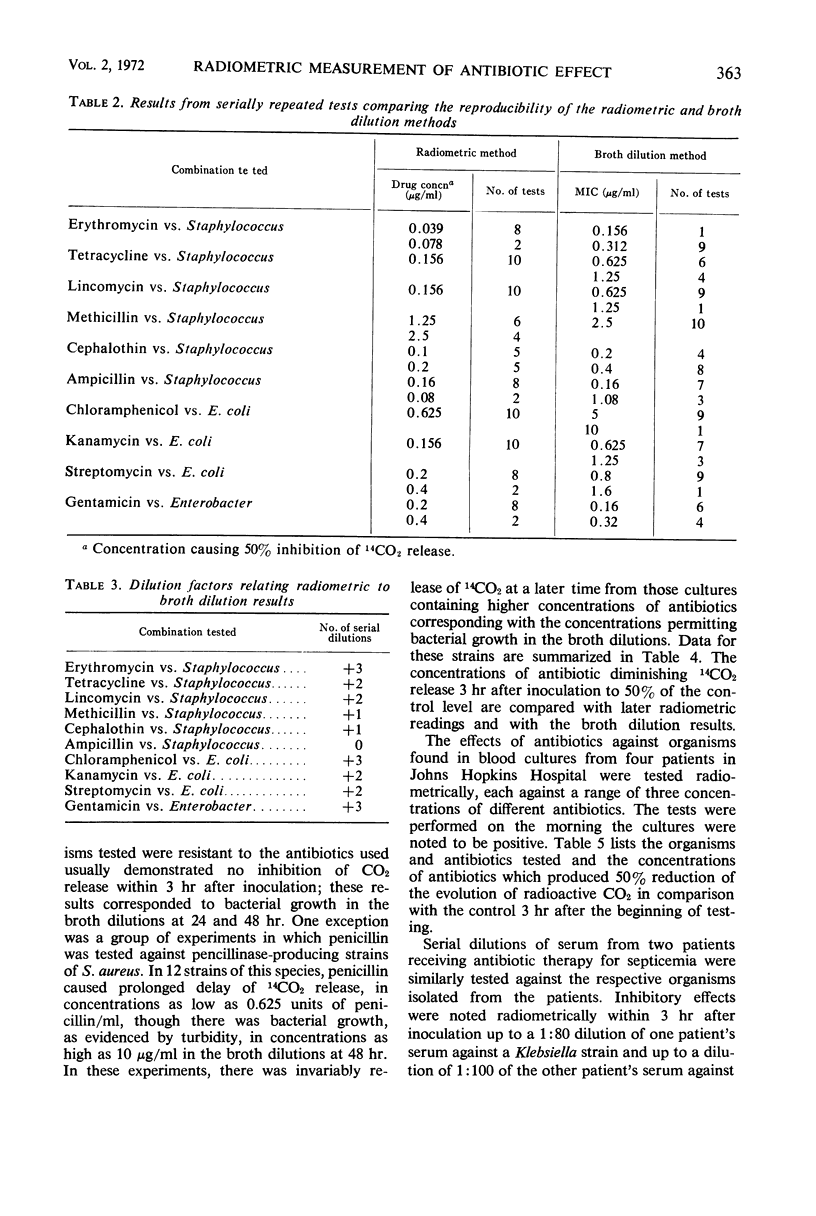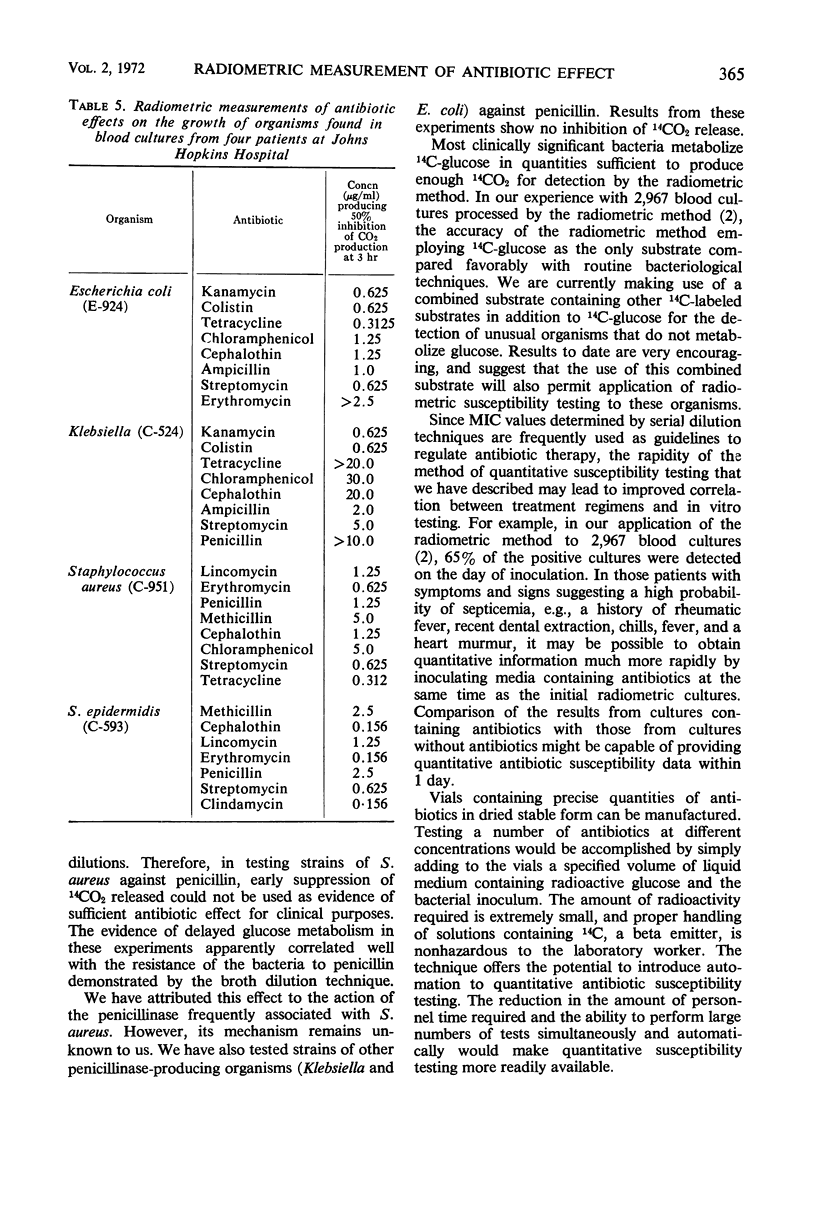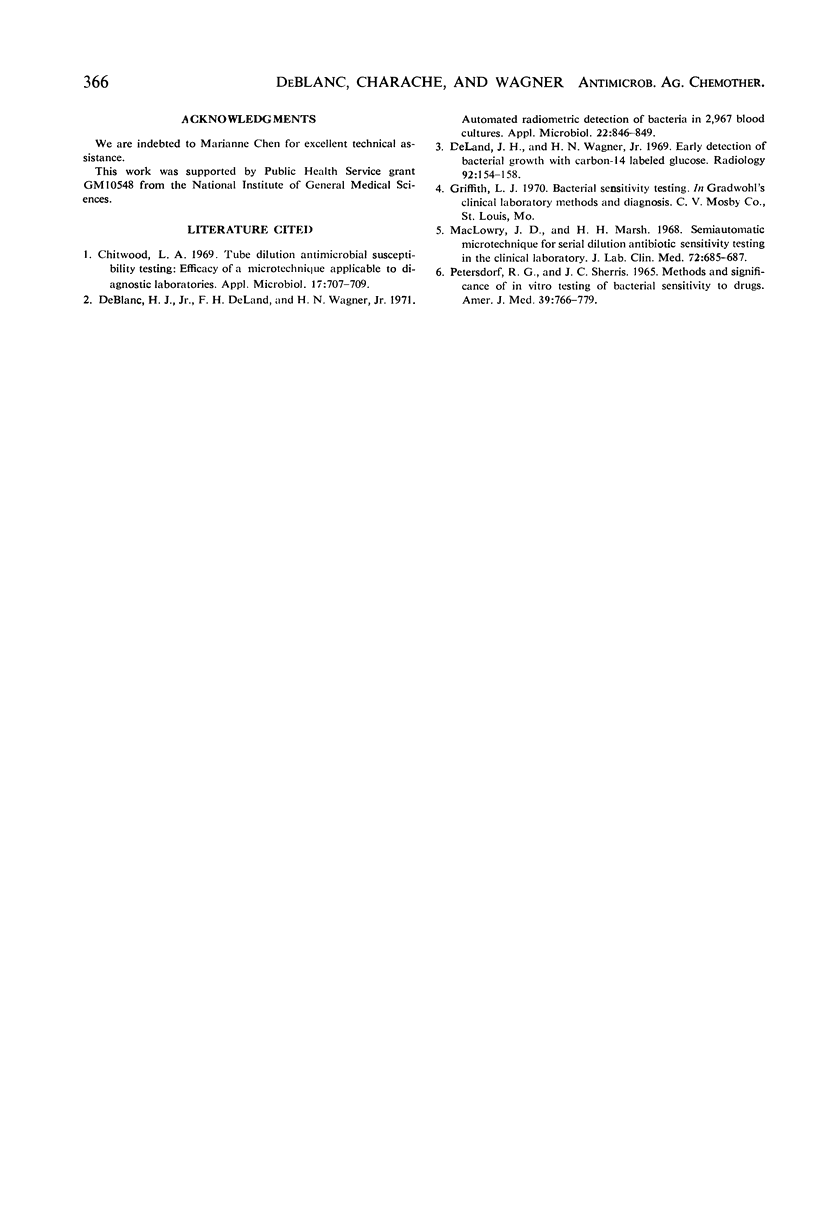Abstract
A new method for rapid, automatic radiometric measurement of antibiotic effects on bacterial growth was developed and compared with a conventional broth dilutior technique. The radiometric method measures the amount of radioactive CO2 generated by the bacterial metabolism of 14C-glucose in the presence of antibiotics. Antibiotic effect on bacterial growth was standardized by measuring the evolution of 14CO2 3 hr after inoculation. This measurement was found to be quantitatively related to increasing concentration of antibiotic provided the organism was susceptible to the antibiotic tested. In 50 of 179 experiments (28%), each testing one organism against serial concentrations of an antibiotic, the concentration of antibiotic producing a 50% reduction of 14CO2 within 3 hr after inoculation in comparison with a control culture was the same as the minimal inhibitory concentration (MIC) determined by the broth dilution technique. In 129 experiments (72%), the antibiotic concentrations inhibiting 14CO2 release to 50% of the control level were less than the MIC values. Results of the radiometric method were related to those of the broth dilution method by constant factors characteristic of the organism and antibiotic tested. Our results indicate that the radiometric method provides a reproducible, quantitative, rapid, and sensitive measurement of the inhibitory effects of antibiotics on bacterial growth. The constant relationship between the results of the radiometric and conventional technique should facilitate the adaptation of the automated method to clinical testing of antibiotic susceptibility.
Full text
PDF






Selected References
These references are in PubMed. This may not be the complete list of references from this article.
- Chitwood L. A. Tube dilution antimicrobial susceptibility testing: efficacy of a microtechnique applicable to diagnostic laboratories. Appl Microbiol. 1969 May;17(5):707–709. doi: 10.1128/am.17.5.707-709.1969. [DOI] [PMC free article] [PubMed] [Google Scholar]
- DeBlanc H. J., Jr, DeLand F., Wagner H. N., Jr Automated radiometric detection of bacteria in 2,967 blood cultures. Appl Microbiol. 1971 Nov;22(5):846–849. doi: 10.1128/am.22.5.846-849.1971. [DOI] [PMC free article] [PubMed] [Google Scholar]
- DeLand F. H., Wagner H. N., Jr Early detection of bacterial growth, with carbon-14-labeled glucose. Radiology. 1969 Jan;92(1):154–155. doi: 10.1148/92.1.154. [DOI] [PubMed] [Google Scholar]
- MacLowry J. D., Marsh H. H. Semiautomatic microtechnique for serial dilution-antibiotic sensitivity testing in the clinical laboratory. J Lab Clin Med. 1968 Oct;72(4):685–687. [PubMed] [Google Scholar]
- Petersdorf R. G., Sherris J. C. Methods and significance of in vitro testing of bacterial sensitivity to drugs. Am J Med. 1965 Nov;39(5):766–779. doi: 10.1016/0002-9343(65)90096-3. [DOI] [PubMed] [Google Scholar]


